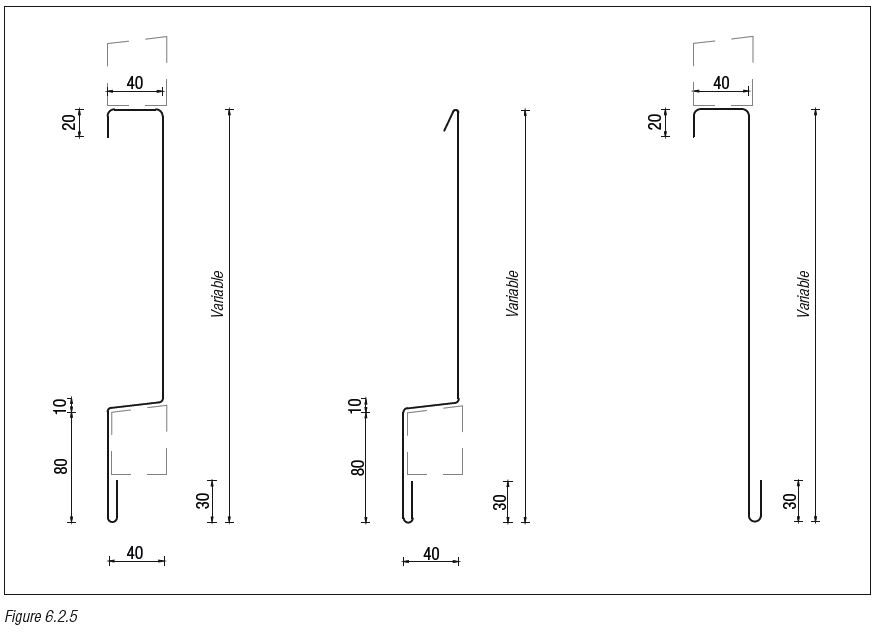Roll Cap system
A Roll Cap façade is a cladding that consists of zinc sheets provided with upstands in the longitudinal direction. Between the bays, so-called wood rolls are installed on the timber boarding. These rolls have a trapezoidal cross section with a width of 40-50 mm and a height of 60 mm. The rain-tight finishing between roof bays and wood rolls is obtained by a covering profile (roll capping). In order to maintain a rain-tight façade, special profiles are used with the horizontal roll caps (see fig. 6.2.4 and 6.2.5).
See also
Roll cap system on a ventilated system
Roll cap system on a damp proof system
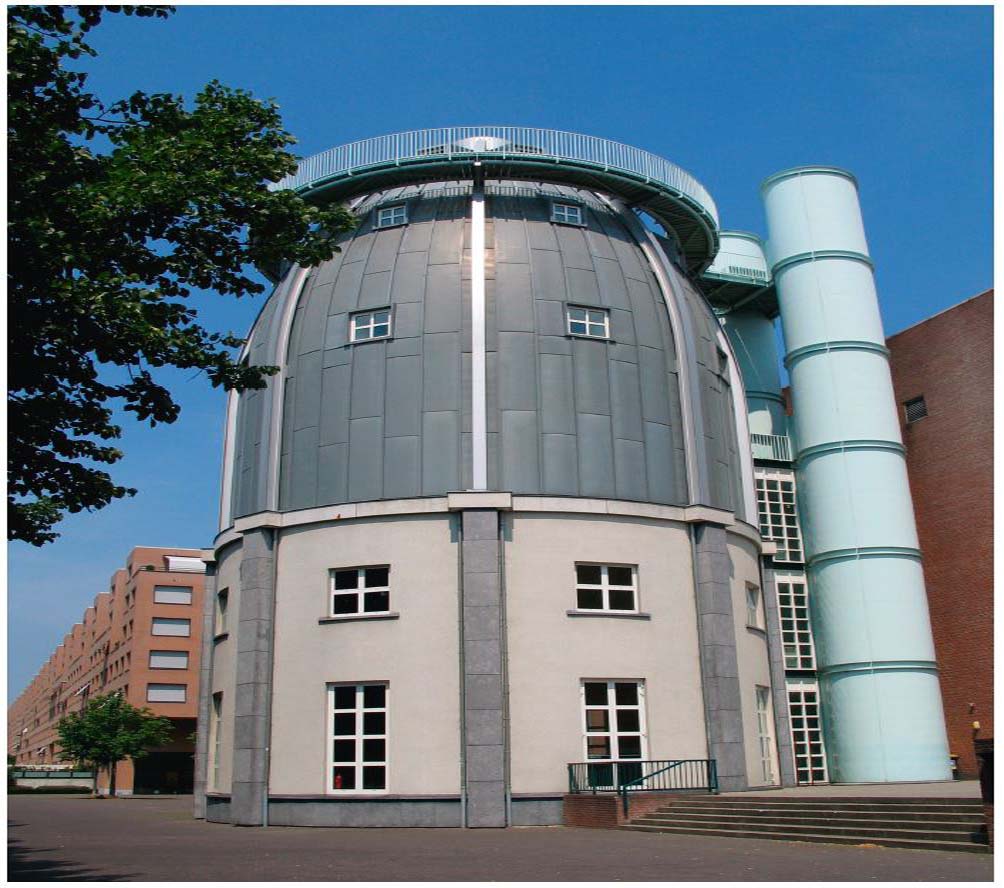
Specifications of Roll Cap standard components
Standard roll cap bay (figure 6.2.1)
Bay width: maximum 890 mm, with 2 upstands each 55 mm and retaining edge
Girth: maximum 1000 mm
Material thickness: 0.80 mm or 1.00 mm
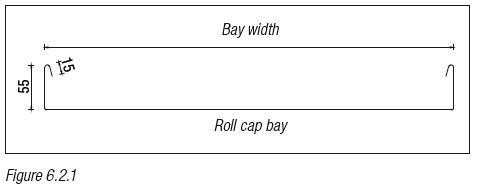
Standard Roll capping (figure 6.2.2)
Cross-section: 65 mm x 25 mm
Material thickness : as for roll cap bay
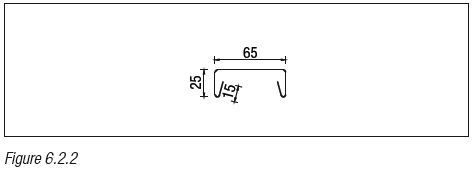
Wood roll
Wood, good quality. The wood roll must be straight and accurately dimensioned
Eaves apron
Width: 330 mm
Material thickness: as for roll cap
Clips (fixed and sliding)
Width: 50 mm
Length: > 220 mm
Material thickness: as for roll cap bay
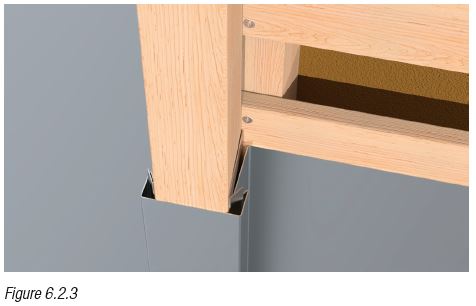
These clips are produced by the sheet metal worker.
The length must have a little excess, so that it can be cut to the exact size during fitting. The fixed clips secure the roll cap bay and the sliding clips make longitudinal thermal movement possible.
Support
The roll cap system must be fully supported by unplaned, untreated wooden boards at least 23 mm thick, not tongue and grooved, with gaps of at least 5 mm and maximum 100 mm. The construction requirements are also important in this. Use galvanised nails with a zinc-layer thickness of at least 20 microns or AISI 304 stainless steel for fastening.
Fastening the clips
When fitting the vertical roll cap bays to the façade the roll cap bay is secured with fixed clips at the uppermost meter. Horizontally assembled roll cap bays with a length up to 3 meters are fully secured with fixed clips. Bays longer than 3 meters are secured over a zone of one meter, in the middle of the standing seam strips. The rest is done with sliding clips. The timber boarding must be aligned at the point where the clips are fitted.
Horizontal roll cap façade
With regard to rain proofing the façade when applying horizontal roll cap bays, use special profiled sheets (see Figure 6.2.4). When using a roll cap system as vertical façade cladding the standing edge of the roll cap bay must have a retaining edge (see Figure 6.2.1).
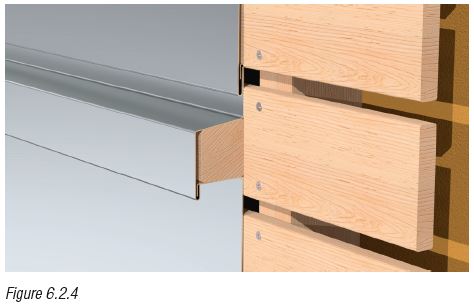
The following auxiliary profiles are used to ensure the façade with horizontal roll cap bays is rainproof.
Horizontal roll cap façade auxiliary profiles
